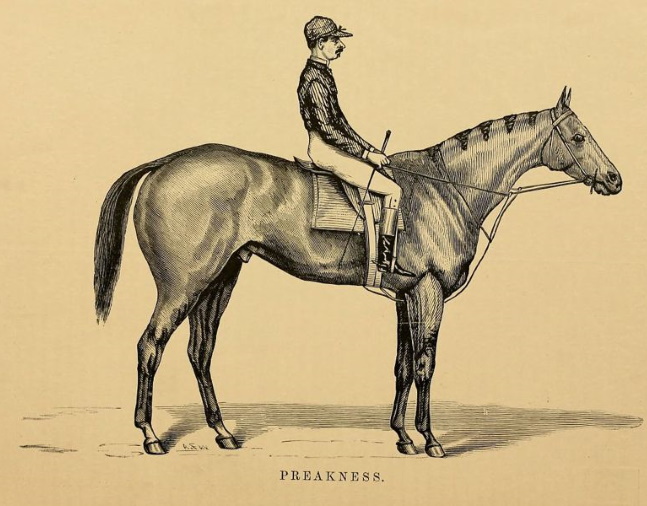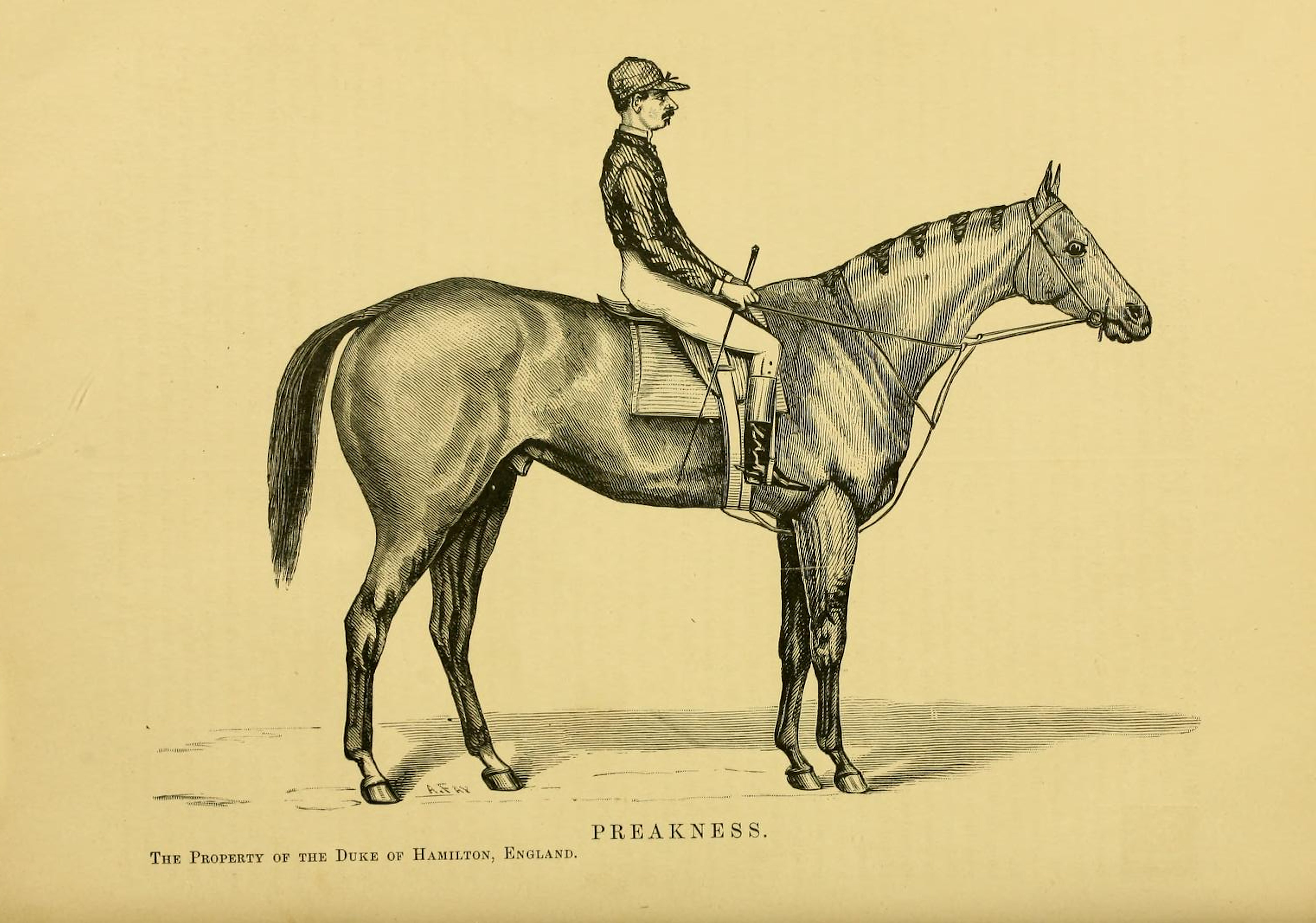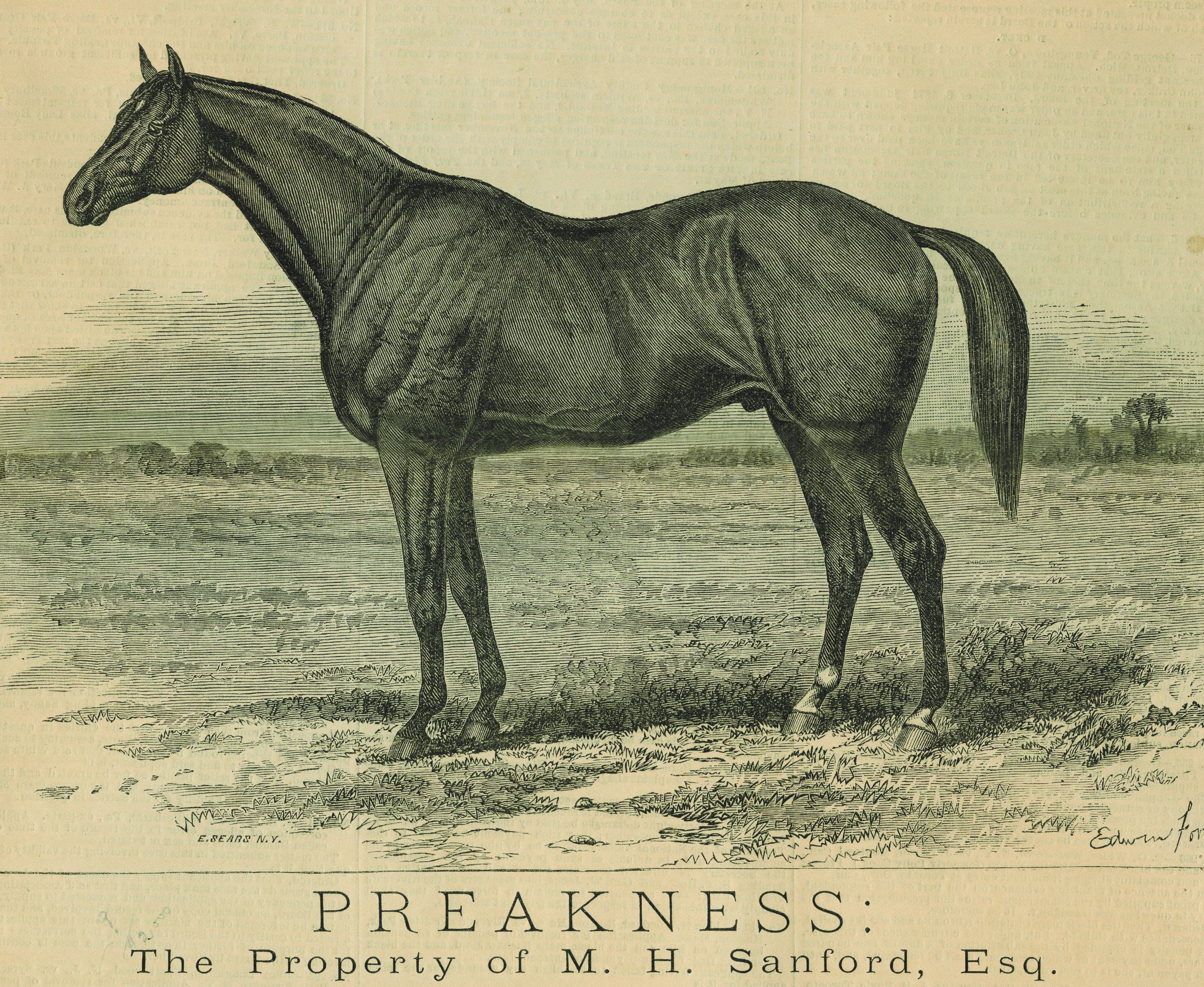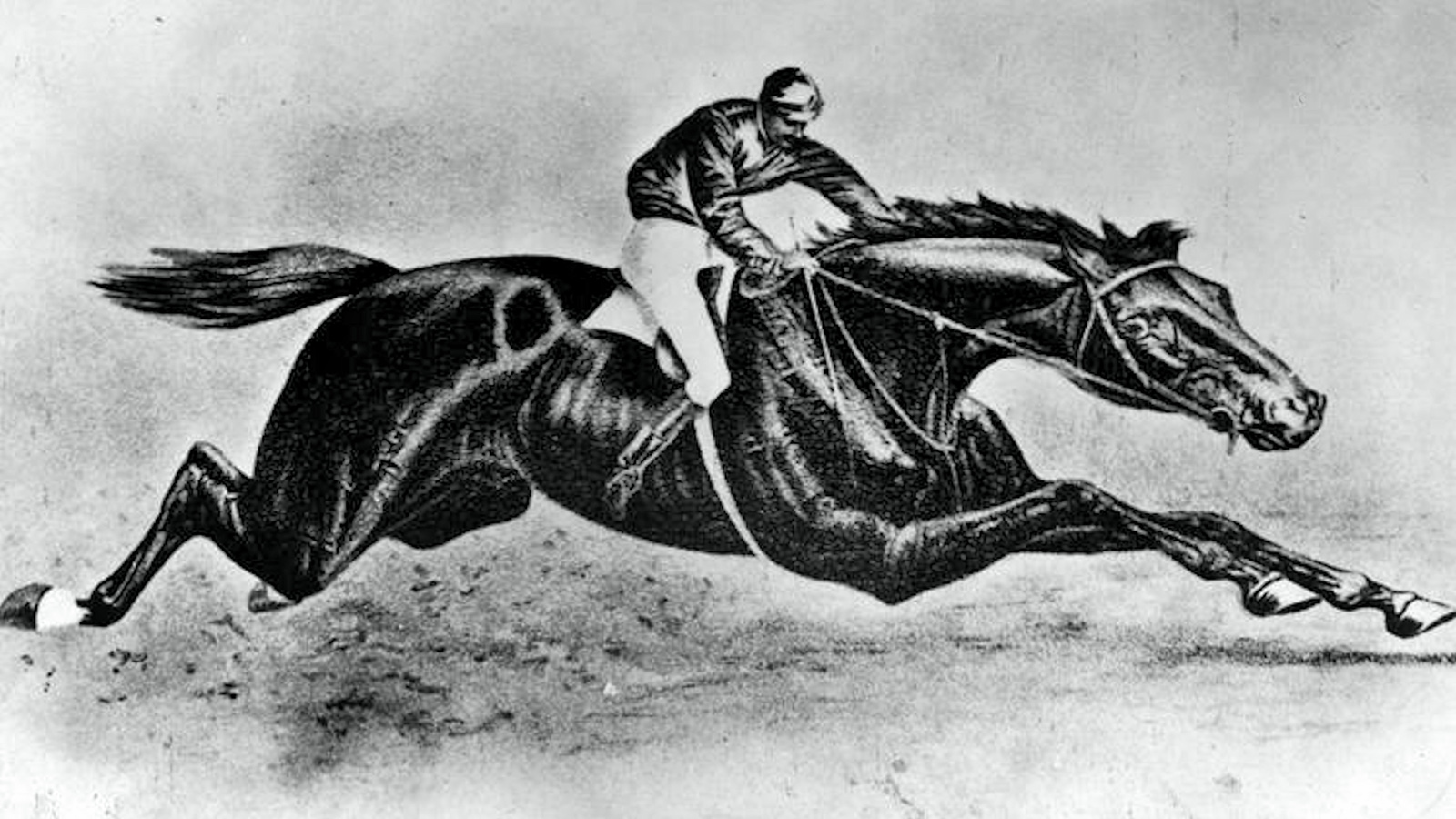Preakness (KY)
When the Preakness Stakes was first contested in 1873, the race’s namesake was still in the prime of his remarkable career.

2018
1867
Lexington
Bay Leaf
Yorkshire
Robert A. Alexander
Milton H. Sanford
Billy Hayward
Charles Littlefield
1870-1876
$39,820
Racing Record
39
Starts
| 1870 | 1 | 1 | 0 | 0 | $17500 $17,500 |
| 1871 | 7 | 3 | 2 | 0 | $8600 $8,600 |
| 1872 | 8 | 2 | 3 | 0 | $1025 $1,025 |
| 1873 | 8 | 5 | 2 | 0 | $5530 $5,530 |
| 1874 | 7 | 4 | 3 | 0 | $4115 $4,115 |
| 1875 | 4 | 2 | 1 | 1 | $3050 $3,050 |
| 1876 | 4 | 1 | 1 | 1 | $0 $0 |
Biography
When the Preakness Stakes was first contested in 1873, the race’s namesake was still in the prime of his remarkable career.
One of the most accomplished and beloved racehorses of the 19th century, Preakness was a 6-year-old when the inaugural race in his honor was won by Survivor at Pimlico Race Course in Baltimore. At the time, Preakness had already won some of the era’s most prestigious events — the Dinner Party Stakes, Westchester Cup and Maturity Stakes, among others — and many of his greatest achievements were still to come.
A foal of 1867, Preakness was bred by Robert A. Alexander at his famed Woodburn Stud in Kentucky. A dark bay colt standing 16 hands when he was fully developed, Preakness was by the mighty stallion Lexington, the eighth foal out of the Yorkshire (GB) mare Bay Leaf.
Milton H. Sanford, a New Jersey lawyer with an emerging racing stable, paid $2,000 for the well-bred colt at Woodburn’s 1868 yearling sale. Sanford named the yearling in honor of his cherished farm, Preakness Stud, and assigned young English trainer and jockey Billy Hayward the task of developing his prized prospect.
Because he had yet to grow into his massive frame and was known to be somewhat cantankerous, Preakness did not race until late in his 3-year-old year. He was finally unveiled at Pimlico when the track opened for the first time on Oct. 25, 1870. Sanford was in attendance at a dinner party at Saratoga Springs, New York, in 1868 during which several prominent sportsmen conceived the idea of a grand sweepstakes to be run two years later open to only the current crop of yearlings. Maryland Gov. Oden Bowie, a noted man of the turf himself, was at the dinner and proposed the race take place in his state at a to-be-constructed track on the outskirts of Baltimore. Thus, the wheels were put in motion for the creation of Pimlico and its first acclaimed race, the Dinner Party Stakes.
Preakness, behind in his training because of some minor injuries, was publicly ridiculed prior to the race. One contemporary account described Sanford’s colt as “a huge bull-like bay whose brutish appearance drew derisive taunts from the crowd” while other reports stated he was “half-trained and fat as an ox” and resembled a “cart horse.” Preakness was essentially an afterthought in the seven-horse field at odds of as much as 40-1.
Appearances didn’t matter once the race began. To the surprise of just about everyone on hand, Preakness proved he could indeed run. Stubbornly turning back numerous challenges in the two-mile event, Preakness defeated Elliptic by two lengths with the heavy favorite Foster finishing third. A rhythmic chant of “Preakness, Preakness, Preakness,” rang out from the massive crowd estimated at 20,000. Preakness was never referred to as a “cart horse” again.
Preakness returned to the track in the spring of 1871 when he met two of racing’s best, 6-year-olds Glenelg and Helmbold, in the 2¼-mile Westchester Cup at Jerome Park. Now trained by Charles Littlefield with Hayward remaining his jockey, Preakness proved his maiden victory was no fluke and registered another easy win. He also added victories that year in the Maturity Stakes at three miles and a walkover in the Pimlico Stakes.
Injuries slowed Preakness as a 5-year-old in 1872, but he returned to top form the following year with victories in the Jockey Club Handicap, Long Branch Stakes, Manhattan Handicap and Grand National Handicap, defeating the great Harry Bassett in both the Manhattan and Grand National. In 1874, as a 7-year-old, Preakness won the Jockey Club Stakes while carrying 130 pounds.
Preakness delivered arguably his best performances as an 8-year-old in 1875. In his season debut, Preakness romped by five lengths in the 2¼-mile Baltimore Cup while carrying 131 pounds. In the 2¼-mile Saratoga Cup that summer, Preakness met six accomplished foes in what racing historian Walter Vosburgh declared “the greatest field of horses that ever started for this, the most famous of all of America’s long-distance fixtures.”
Springbok was favored to win the 1875 Saratoga Cup. When he arrived at Saratoga that July, Springbok already had three quality wins that year and his past performances included victory in the 1873 Belmont Stakes and a win over Preakness in the 1874 Saratoga Cup.
As they came into the stretch, Preakness and Springbok pulled away from the field and engaged in what the Spirit of the Times described as “a desperate struggle” near the finish. Springbok “collared Mr. Sanford’s old horse, and, for a moment, got his head in front, just as Preakness swerved slightly. But, with mastery skill, Hayward straightened and steadied his horse, and nursing him for one final effort, brought him with an electric rush in the last few strides, making a dead heat of it on the post.” The time of 3:56¼ broke Harry Bassett’s previous record for 2¼ miles (3:59) and stood as the standard for 23 years.
Preakness, in what was his final race in America, had once again displayed his talent, heart and stamina on one of the sport’s biggest stages. In a reverential tribute, the Spirit of the Times said: “We must pause in admiration before so grand an animal.” It should have been a fond farewell, but the story continued across the pond.
Believing his horse was still sound and capable, Sanford sent 9-year-old Preakness to England in 1876. His performances, considering his age, were credible. Preakness won once in four starts and was competitive in each before finally being retired with a career with a record of 18-12-2 from 39 starts and earnings of $39,820.
Preakness gained many admirers with his determined efforts in England, including the Duke of Hamilton, who arranged to purchase the horse from Sanford as a stallion. Preakness sired a few winners, but he did not take well to his new home and developed a savage temper. At the age of 14, Preakness lashed out at the Duke in front of several of his guests. The Duke, known to have an even worse temper than Preakness, shot the horse dead. The repulsive act sparked tremendous outcry in England that led to the establishment of strict laws governing animal cruelty.
Summarizing the career of Preakness, Turf and Sport Digest stated: “It is improbable that a more courageous, stouter, or more rugged horse, enduring, consistent and, with it all, of intense speed, ever trod an American race course.”
Achievements
Co-Champion Handicap Male — 1875
Notable
Won the Dinner Party Stakes — 1870
Won the Maturity Stakes — 1871
Won the Westchester Cup — 1871
Won the Grand National Handicap — 1872
Won the Jockey Club Handicap — 1872
Won the Long Branch Stakes — 1872
Won the Manhattan Handicap — 1872
Won the Jockey Club Stakes — 1874
Won the Baltimore Cup — 1875
Won the Saratoga Cup — 1875
Media







